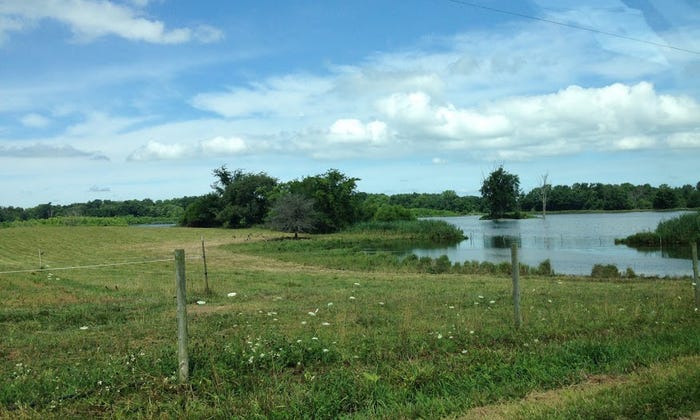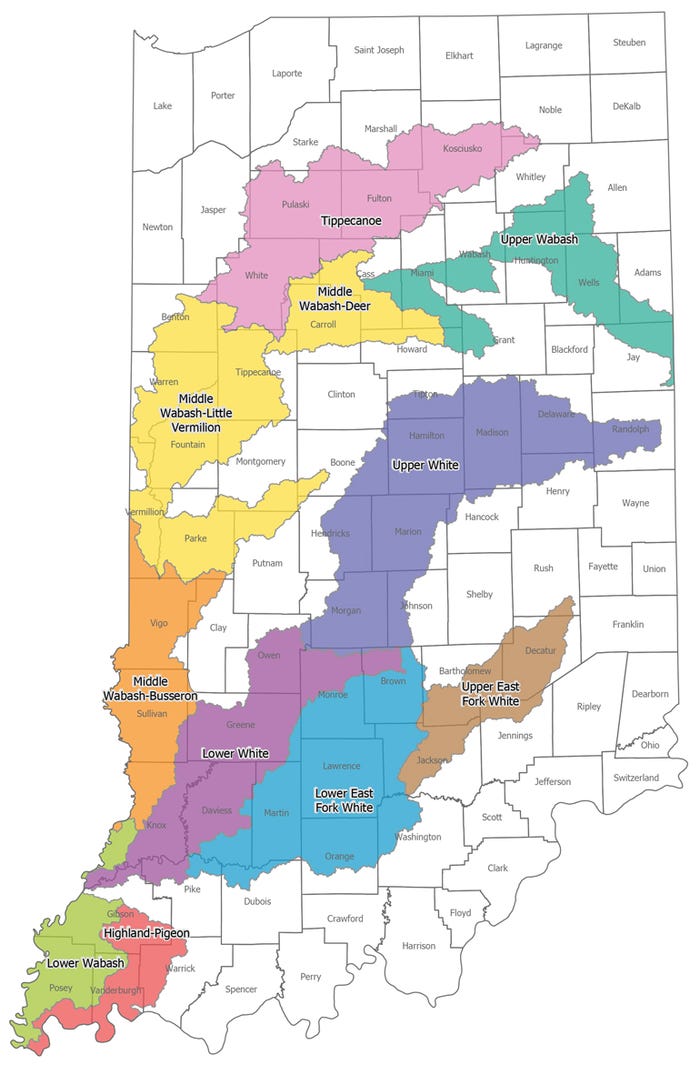
Conservation efforts in Indiana took a major step forward in 2005 when then-Lt. Gov. and Secretary of Agriculture Becky Skillman announced that the state would participate in the federal Conservation Reserve Enhancement Program. Since that time, thousands of vulnerable acres in Indiana have been planted to grass or trees or converted to wetlands.
“The neat thing about this program is how it allows us to leverage federal dollars,” says Jordan Seger, deputy director of the Indiana State Department of Agriculture. Before becoming deputy director, Seger was in charge of ISDA’s Division of Soil Conservation. Funding that allows Indiana farmers and landowners to participate in the USDA CREP comes through Clean Water Indiana, a program managed by the Division of Soil Conservation. Funding for CWI comes from a dedicated percentage of the state tobacco tax, plus general funds allocated by the Legislature in addition to the cigarette tax funding.
“We just completed a record year for enrollment in CREP in Indiana,” Seger says. “Landowners and/or farmers receive a financial incentive for enrolling land that is vulnerable for soil and water quality issues into the program.
“For every dollar the state invests toward these incentives, the federal government invests $7 to $10, depending upon the practices involved. It’s a tremendous win for landowners, farmers and Indiana.”

RESTORED WETLAND: CREP funds were used to restore this wetland in Marshall County, Ind. The program helps farmers and landowners get more bang for their buck.

When the program began in Indiana in 2005, the goal was to enroll up to 7,000 acres in three watersheds. In 2010, the program was expanded to 11 watersheds, with a goal of enrolling over 27,000 acres.
Tree planting, often along streams or rivers, is the No. 1 practice for CREP in Indiana right now, Seger says. In 2018 alone, 750,000 trees were planted through the program. The second most popular practice is wetland restoration.
The watersheds that are currently eligible for participation in CREP in Indiana are: Highland-Pigeon, Lower East Fork White, Lower Wabash, Lower White, Middle Wabash-Busseron, Middle Wabash-Deer, Middle Wabash-Little Vermilion, Tippecanoe, Upper East Fork White, Upper Wabash and Upper White (see map below).

These watersheds were selected because they are targeted as areas that could benefit from reducing runoff from farmland into streams and rivers. The goal is to reduce the sediment and nutrient load in the waterways that serve these watersheds, Seger notes.
Buffers with grass or trees and wetlands created through the program help reduce agricultural runoff in these targeted watersheds, he adds. USDA’s Farm Service Agency plays a key role in helping landowners and farmers receive cost-share for practices and payment incentives for enrolling land in the program.
Julie Harrold is program manager for CREP and water quality incentives within ISDA, Seger says. Learn more by emailing her at [email protected] or call 260-341-6698. You can also learn about potential eligibility to participate in this program by visiting your local FSA office.
About the Author(s)
You May Also Like




